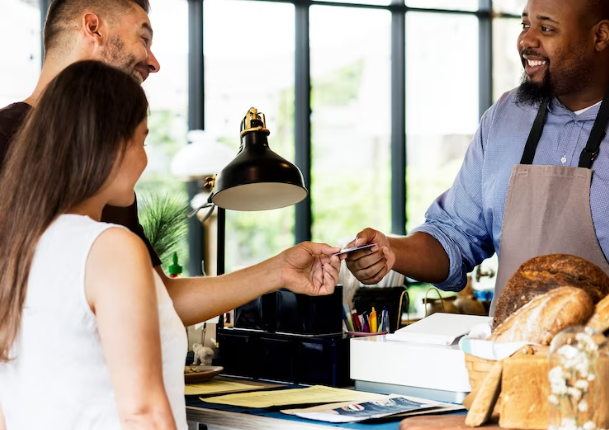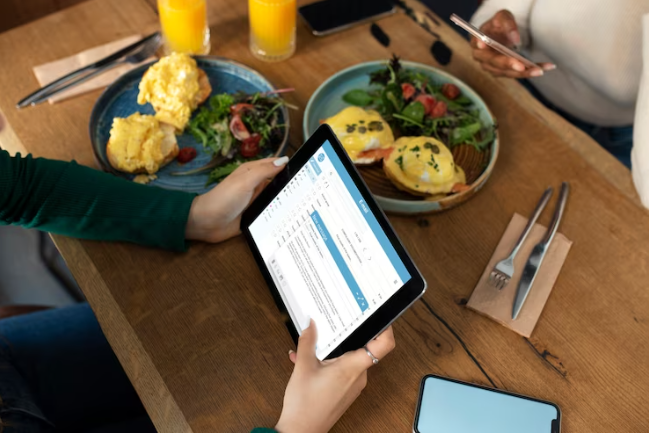Are you a restaurant owner looking to increase customer loyalty and boost sales? One effective way to achieve this is by implementing a loyalty program. A well-designed loyalty program can not only keep your existing customers coming back but also attract new ones.
In this article, we will guide you through the process of creating an effective restaurant loyalty program that will help you achieve your business goals.
To create a successful loyalty program, you must first understand your customers’ needs and preferences. You need to know what motivates them to come to your restaurant and what they value most. By gathering this information through surveys or feedback, you can design a program that is tailored to their needs.
The next step is to set clear goals for your loyalty program. Do you want to increase customer retention, boost sales, or promote a new menu item? Once you have a clear goal in mind, you can design rewards and incentives that will drive customer engagement and achieve your objectives.

Understanding Your Customers’ Needs and Preferences
Understanding your customers’ needs and preferences is key to creating a successful loyalty program, as it allows you to tailor rewards and incentives to their specific desires and behaviors. Customer profiling is an essential tool in this process.
By analyzing customer data, you can identify their typical spending patterns, preferred menu items, and frequency of visits. This information can then be used to create targeted promotions and rewards that are more likely to resonate with your customers.
Data analysis is another crucial aspect of understanding your customers. By tracking customer behavior, you can gain insights into what motivates them to visit your restaurant, what types of rewards they prefer, and what factors might influence their decision to visit your competitors.
This information can then be used to create a loyalty program that offers personalized rewards and incentives that are most likely to inspire repeat visits and customer loyalty. By taking the time to understand your customers’ needs and preferences, you can create a loyalty program that truly resonates with them and helps to build a strong and loyal customer base.
Setting Clear Goals for Your Loyalty Program
To really make your loyalty program work for you, you need to be crystal clear about what you want to achieve. Start by defining your goals. What do you want to accomplish with your loyalty program? Do you want to increase customer loyalty, drive more sales, or boost your online reviews?
Defining metrics and tracking progress are crucial to the success of your program. Once you’ve decided on your goals, break them down into smaller, achievable objectives. For example, if your goal is to increase customer loyalty, you might set an objective to increase the number of repeat customers by 10% within the next six months.
This objective is specific, measurable, and time-bound, making it easier to track progress and adjust your strategies accordingly. Remember to set realistic goals that align with your overall business objectives and budget.
Designing Rewards and Incentives that Drive Customer Engagement
Designing rewards and incentives that drive customer engagement can be a fun and creative process that keeps your customers excited about your brand. Personalization strategies can be a great way to make your loyalty program feel unique and tailored to each individual customer.
By using customer data to offer personalized rewards and incentives, you can show your customers that you value their loyalty and understand their preferences. Gamification techniques can also be effective in keeping customers engaged with your loyalty program.
By adding elements of competition or surprise, you can make your program more exciting and encourage customers to keep coming back. For example, you could offer bonus points for completing certain challenges or for referring friends to your restaurant.
By designing rewards and incentives that are both personalized and fun, you can create a loyalty program that truly stands out and keeps your customers coming back for more.
Implementing Your Loyalty Program with Technology and Marketing Strategies
By integrating technology and implementing targeted marketing strategies, you can seamlessly execute your loyalty program and maximize customer engagement. One key technology to consider is CRM integration, which allows you to track customer behavior and tailor your loyalty program accordingly.
With this technology, you can identify your most loyal customers, understand their preferences and purchase history, and offer them personalized rewards and incentives that are most relevant to them. This not only strengthens their loyalty to your restaurant but also enhances the overall customer experience.
Another effective marketing strategy is to leverage social media campaigns. Social media platforms like Facebook, Instagram, and Twitter provide a cost-effective way to reach a large audience and promote your loyalty program.
You can use social media to share exclusive offers, announce new rewards, showcase customer testimonials, and more. Additionally, social media allows you to engage with your customers in real-time, respond to their feedback, and build meaningful relationships with them.
By integrating technology and marketing strategies like CRM integration and social media campaigns, you can create an effective loyalty program that drives customer engagement and ultimately boosts your restaurant’s bottom line.
Measuring Success and Adapting Your Program for Continued Growth
Once your loyalty program is up and running, it’s important to regularly measure its success and make adjustments for continued growth.
One way to do this is by tracking metrics such as customer retention rate, purchase frequency, and average order value. By keeping track of these numbers, you can identify areas of your program that are working well and areas that may need improvement.
For example, if your retention rate is high but customers are not increasing their purchase frequency, you may need to offer additional incentives to encourage repeat visits.
Another important aspect of measuring success is gathering customer feedback. This can be done through surveys, online reviews, or simply asking for feedback during in-person interactions.
By listening to your customers, you can gain valuable insights into what they like and dislike about your loyalty program, and use that information to make adjustments. For example, if multiple customers mention that they would like more personalized rewards, you could consider implementing a tiered system based on their purchase history.
By continuously adapting your program based on customer feedback and metrics, you can ensure that it remains effective and valuable to both your business and your loyal customers.
Frequently Asked Questions
How do you handle customers who are not interested in participating in a loyalty program?
If a customer isn’t interested in your loyalty program, don’t push it. Try offering alternative rewards like a free appetizer or discount on their next visit. Handling uninterested customers with alternative rewards can still make them feel appreciated.
What are some common mistakes to avoid when designing a loyalty program?
Common mistakes to avoid when designing a loyalty program include not offering enough rewards, making the program too complicated, and failing to track customer data. Best practices involve understanding your target audience and creating a simple, transparent program.
How can you ensure that your loyalty program is fair to all customers?
To ensure customer satisfaction and fairness in loyalty programs, offer customization options to tailor rewards based on individual behaviors and preferences. This creates a level playing field and maximizes the value of the program for all customers.
Is it necessary to offer discounts or freebies as rewards, or can other incentives be just as effective?
“Alternative incentives such as exclusive access to events or personalized experiences can be effective in a loyalty program. By tailoring rewards to individual preferences, customers feel valued beyond just discounts and freebies.”
How do you balance the costs of implementing a loyalty program with its potential benefits for your restaurant?
To balance the costs of a loyalty program with potential benefits, conduct a cost benefit analysis. Consider implementation strategies, such as simple point systems or personalized rewards, to ensure a successful program without overspending.
Conclusion
Congratulations, you’ve successfully learned how to create an effective restaurant loyalty program. By understanding your customers’ needs and preferences, setting clear goals, designing compelling rewards and incentives, implementing with technology and marketing strategies, and measuring success, you’ve created a program that will drive customer engagement and loyalty.
Remember, a successful loyalty program is not static. It requires ongoing adaptation and refinement to keep up with changing customer needs and market trends. So, keep measuring your program’s success and don’t be afraid to make adjustments to ensure continued growth.
With these tips in mind, you’re well on your way to building a loyal customer base and achieving long-term success for your restaurant. Good luck!



